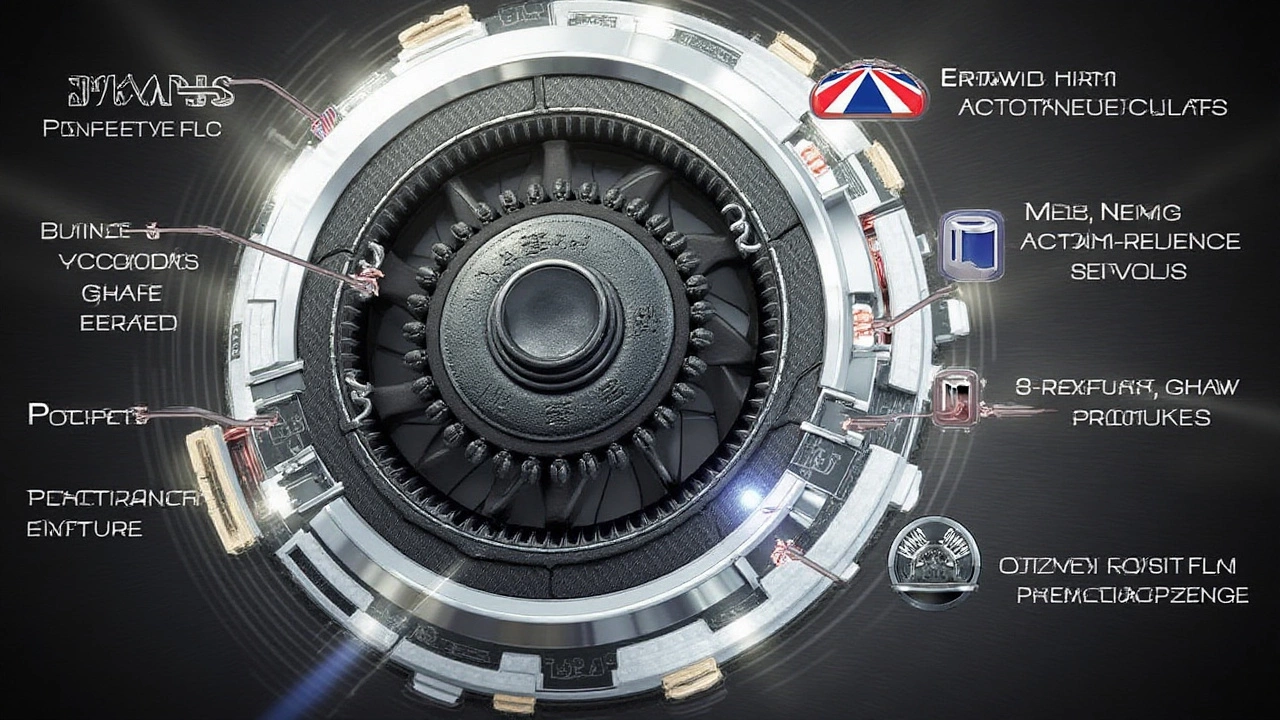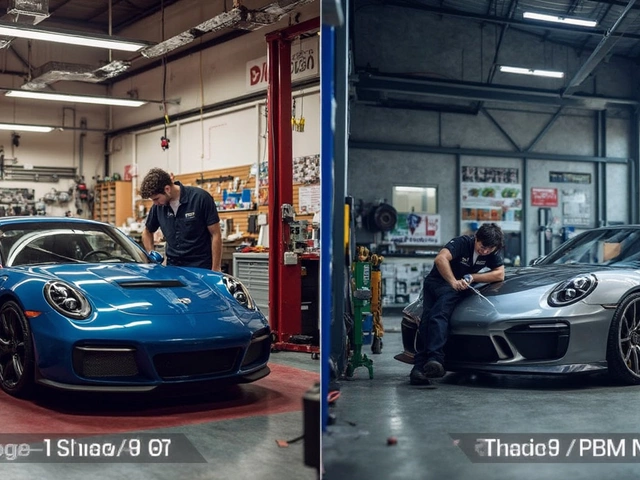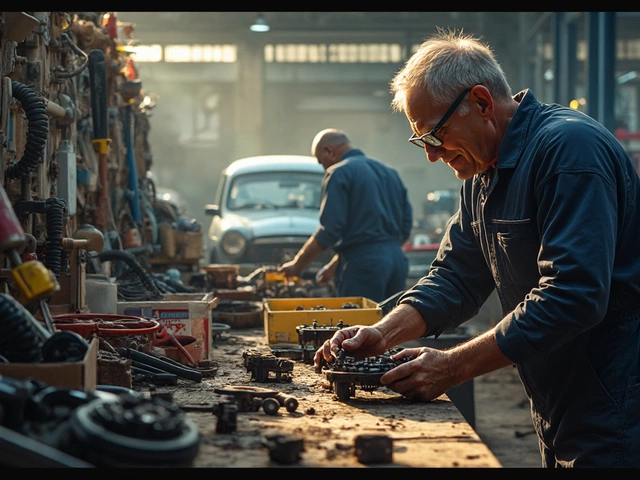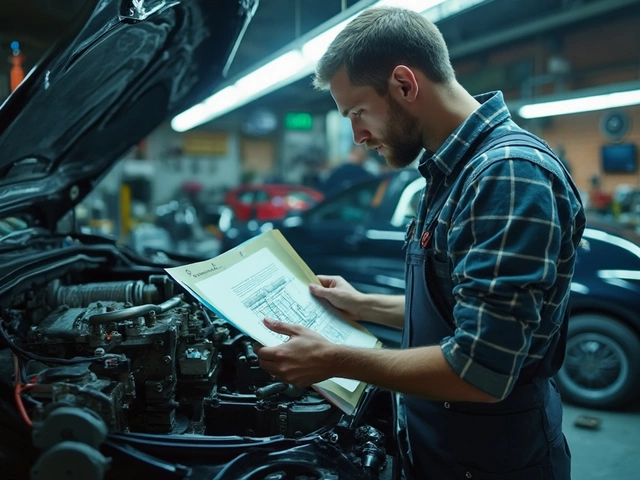When it comes to maximizing the potential of high-performance vehicles, stage 3 clutches play a pivotal role in ensuring that the power generated by your engine is effectively transferred to the wheels. These clutch systems are designed to handle significantly more torque than their standard counterparts, making them a popular choice among car enthusiasts who frequent the racing circuits or simply want a more responsive driving experience.
If you're considering upgrading your clutch system, understanding what sets a stage 3 clutch apart from the rest can be crucial. These clutches feature heavier pressure plates and advanced friction materials that provide enhanced durability and grip, essential for handling the increased power output of modified engines. But is a stage 3 clutch right for you? Discover whether this performance-enhancing component aligns with your driving needs and style, and learn some tips for installation and maintenance to ensure you get the best out of your upgrade.
- Introduction to Stage 3 Clutches
- Benefits of Upgrading to a Stage 3 Clutch
- Components of a Stage 3 Clutch Kit
- Who Needs a Stage 3 Clutch?
- Installation and Maintenance Tips
Introduction to Stage 3 Clutches
The world of automotive improvement is as varied and dynamic as the vehicles themselves, especially when it comes to clutch systems. A stage 3 clutch serves as an essential component for those who crave more from their machines. These clutches are not merely another step in the scale of performance but rather a leap designed to transform the driving experience into something truly formidable. Compared to stock clutches, the stage 3 clutch boasts robust materials like high-carbon content metallic compounds and fortified pressure plates, which are engineered to handle significant horsepower and torque requirements. This design makes them particularly suitable for racing or situations where rapid engagement and disengagement of the clutch are required, allowing drivers to shift gears with precision and confidence.
At the heart of the stage 3 clutch's prowess is its remarkable ability to endure higher thermal and mechanical stress, a characteristic that sets it apart from its less advanced counterparts. The friction materials used in these clutches are specially formulated to resist wear and provide a strong grip, even when the going gets tough. For racing enthusiasts and builders of customized cars, this means fewer problems with slipping and overheating. But does this mean sacrificing everyday drivability? Not necessarily. While they might require a firmer pedal feel and may make some noise when engaged intensely, for many drivers, the trade-off is worth the performance gains.
Stage 3 Clutches in Action
When it comes to performance benefits, stage 3 clutches shine in competitive environments. Whether you are taking part in a drag race or pushing your limits on a challenging road course, the clutch is a component that cannot afford to falter. By providing a high level of control, it allows the driver to optimize throttle response and decrease shift times. Consider rally car mechanics, who must maintain peak performance under rigorous conditions. As noted by automotive expert James Ballentine, “A well-tuned stage 3 clutch can be the difference between leading the pack and trailing behind.”
“Engagement might feel different, but once you adapt, the reliability and power transfer is palpable,” states racing veteran Carla Gunther.
While many may be drawn to the allure of increased performance, it is vital to recognize that stage 3 clutches are not universally necessary. They are most effectively utilized when other vehicle systems have been enhanced to match their capability. Engines that have been significantly modified or turbocharged will benefit immensely from a stage 3 clutch upgrade, as it ensures the power produced is fully harnessed from start to finish. However, if the vehicle remains unmodified, a stage 3 clutch might be too excessive, introducing a level of complexity that may not translate to tangible benefits. Thus, for those contemplating this upgrade, a thorough consideration of existing vehicle components and how they will interact with the clutch is paramount.
Benefits of Upgrading to a Stage 3 Clutch
Stepping up to a stage 3 clutch is akin to unlocking a new tier of potential in your vehicle's performance profile. One of the primary advantages is its ability to handle increased torque comfortably. This is crucial for enthusiasts employing turbochargers or other power-boosting modifications. Standard clutches often falter under the added stress, leading to slippage or failures. A stage 3 clutch, however, features reinforced pressure plates and tougher friction materials, making it a perfect companion for those seeking to reliably push the boundaries of what their car can accomplish.
This robustness not only translates into superior performance but also provides a significant increase in durability. Think about it; with a vehicle tuned for higher power, the stress on the clutch is immense. An upgraded clutch withstands this pressure, extending its lifespan versus a standard model under the same conditions. Moreover, the materials used in these clutches, such as carbon or kevlar composites, are designed for superior heat dissipation, reducing the wear and tear typically seen during aggressive driving or racing events.
"The stage 3 clutch is like the unsung hero in performance racing, delivering power consistently and confidently to the ground," says renowned automotive expert Tom Jensen.
Performance Enhancements
For the performance-savvy driver, a stage 3 clutch can offer quicker and more precise gear engagements. This results from a reduction in the rotational inertia of the clutch components, which in turn provides faster engine response. During competitive racing or spirited driving, the milliseconds shaved off in gear shifts can make all the difference. Alongside improved gear shits, drivers may notice a more tactile feel in the clutch pedal. While this might initially feel heavier or more aggressive compared to what you’re used to, it ultimately affords greater control and precision over vehicle inputs.
Vehicle balance and stability can also benefit indirectly. As power is more efficiently transferred to the drive wheels, traction can improve, providing a more grounded and responsive ride. The upgraded system ensures energy isn't lost in unnecessary slippage, making every drop of fuel and ounce of power work for you. It's important to note, though, that with these benefits also comes the necessity for gradual familiarization; the increased responsiveness and pedal pressure can have a learning curve, but once mastered, the rewards are evident in every aspect of the driving experience.
Financial Considerations
Financially, the investment in a stage 3 clutch is one that, while initially forking out more cash than a regular clutch, can save money in the long run. Owners won't face the unsettling frequency of replacements and repairs often encountered with stock parts under heavy use. Granted, installation costs might be higher due to specialized labor requirements, but this pales in comparison to the recurring costs of premature wear and potential damage from inadequate traction solutions.
Whether you are an everyday enthusiast or a weekend race warrior, investing wisely in your vehicle's components can mitigate the risk of costly downtimes. Upgrading crucial components like the clutch not only reinforces reliability but can also add resale value to vehicles specifically tuned for performance. So, while the upfront financial commitment is steeper, the payoff in both experience and economy becomes increasingly evident over time.
| Torque Handling | Lifespan | Typical Application |
|---|---|---|
| High | Extended | Turbocharged/Race |
| Moderate | Medium | Daily Driver |

Components of a Stage 3 Clutch Kit
At the heart of what sets a stage 3 clutch apart from its predecessors are the high-quality components engineered for maximum performance. These kits are tailor-made for vehicles where robustness and torque transmission are paramount, offering car enthusiasts and motorsport drivers the tools to harness their vehicle's true potential. The key components of a stage 3 clutch kit include the pressure plate, clutch disc, release bearing, and alignment tool, each playing a vital role in the clutch's ability to transmit power efficiently.
The pressure plate in a stage 3 clutch is designed to provide increased clamping force, a significant step up from standard and stage 1 or 2 variants. This is due to its stiffer diaphragm spring, which ensures the friction disc is held with greater pressure against the flywheel. Such improved grip is crucial in handling the additional loads and power demands of a high-performance engine. The pressure plate's resilience is often aided by reinforced steel construction, minimizing the risk of warping under intense heat.
Clutch discs in these kits are also crafted with performance in mind, utilizing modern friction materials like Kevlar or ceramic composites. These materials are known for their ability to withstand the high temperatures and pressures found in demanding driving conditions, such as drag racing or circuit racing. The surface of these discs may feature a puck design rather than the full-face friction material found in standard clutches, providing more aggressive engagement and improved cooling.
An essential yet often overlooked component is the release bearing, also referred to as a throwout bearing. In a stage 3 clutch, the release bearing must be durable enough to endure the frequent engagement and disengagement that occur under racing conditions. High-quality materials and design ensure smooth operation, reducing driver fatigue even in the most demanding scenarios. Often accompanying these components is an alignment tool, designed to aid in the precise installation of the clutch kit.
"Choosing the right stage of a clutch is crucial for both vehicle performance and longevity. Stage 3 clutches provide the perfect balance of power transfer and durability," explains automotive expert John Simmons from Performance Motorsports.
In summary, the components of a stage 3 clutch kit are meticulously engineered to handle the rigors of performance driving. By selecting materials and designs that enhance strength and reliability, these kits meet the demands of increased horsepower and torque. Such engineering ensures that if you're planning to take your vehicle's capabilities to the next level, a stage 3 clutch will not only meet but likely exceed your expectations, providing both seamless power transfer and confidence on the track.
Who Needs a Stage 3 Clutch?
A stage 3 clutch isn't something every driver needs, but it is indispensable for a select group of car enthusiasts and performance-seekers. Those who enjoy the thrills of motorsport, such as drag racing or track days, will benefit from such robust systems. The ability of a stage 3 clutch to handle the rigors of swift gear shifts and higher torque levels makes it a favored choice for those pushing their cars beyond factory specifications. This type of clutch goes beyond simply functioning as a replacement part; it's an upgrade aimed at performance that's simply unachievable with a standard clutch.
Individuals who've made extensive modifications to their vehicles' engines, such as turbocharging or installing larger injectors, are prime candidates for this clutch upgrade. When a car's engine produces significantly more horsepower than what the manufacturer originally intended, the stock clutch often becomes a weak link, failing to translate the power effectively. A stage 3 clutch can bear the weight of these horsepower gains, transferring power more efficiently to the drive wheels without slip or lag. It's this characteristic that truly defines who will need this upgrade, as it anchors the increased power of heavily modified engines.
Everyday driving may not necessitate the use of a stage 3 clutch, and for those primarily cruising city streets or enjoying long relaxed drives, it might not be necessary. However, for the performance-minded, the upgrade means resilience under stress, firm engagement, and reliability during high-load scenarios.
“A stage 3 clutch is like an insurance policy for your engine's performance,” says performance expert Ellis Price. “When you're investing in power gains, you need the drivetrain to follow suit.”This assurance is why many gearheads swear by their upgraded clutch kits, offering them the peace of mind that their setup can withstand the demands of more intense driving.
There's a consideration of driving experience, too. A stage 3 clutch usually requires a stronger pedal pressure which isn't burdensome on the track but can be fatigued for daily commuters. Despite that, the trade-off might be a worthy consideration for those whose weekends are filled with tire smoke and roaring exhausts. Understanding individual needs against this backdrop is essential, and someone dipping their toes into performance driving may find that a stage 2 clutch suffices. Nevertheless, anyone committed to squeezing out every bit of performance from their setup will undoubtedly find the stage 3 variant invaluable.
Interestingly, a stage 3 clutch might also appeal to rally enthusiasts who crave reliability in diverse and rugged conditions. Since these clutches can manage both high heat and friction without faltering, they ensure consistent performance over dirt, gravel, and mud—the environments where less capable clutches would quickly meet their match. So, who truly needs a stage 3 clutch? It's not just those committed to racing but anyone whose passion for driving is matched by a commitment to performance enhancement. Embracing this component ensures that every drive becomes an exhilarating experience.

Installation and Maintenance Tips
Installing a stage 3 clutch requires both skill and precision due to the complexity and critical nature of the task. Before you begin, ensure you have the right tools ready, such as a clutch alignment tool, socket set, torque wrench, and a jack or lift. Safety should be your paramount concern, so double-check all equipment to prevent accidents. Many recommend enlisting the help of a friend or professional due to the heavy and awkward nature of the components you're handling during installation. Jack up your vehicle securely and remove the transmission, taking care to label or remember the position of every bolt, so reassembly goes smoothly. Don't rush this delicate process; patience is key to achieving a high-quality installation and prolonging the life of your clutch.
Proper maintenance of your clutch kit is fundamental to ensure its longevity and performance. Begin your maintenance regimen by frequently checking for any signs of wear or unusual noises emanating from the clutch. A quick listen can often help identify problems early. Keeping your clutch free from contaminants like oil can prevent slippage and degradation; therefore, ensure that the bell housing is sealed, and there are no leaks. A periodic inspection of the clutch's hydraulic system ensures that there are no leaks or air bubbles that could adversely affect performance. Experts suggest that adjusting driving habits can greatly influence clutch lifespan. Avoiding aggressive starts and stops, slow gear transitions, and understanding your vehicle’s specific handling characteristics can significantly extend the life of your clutch.
For those eager to dive into the numbers, a key statistic from a recent automotive study might be eye-opening: clutches that receive routine maintenance every 30,000 miles tend to last an impressive 50% longer than those that go without. Regularly replacing the clutch fluid is another essential often overlooked, yet it can be crucial for maintaining smooth operation. It helps in dissipating heat generated during clutch engagement and disengagement, ensuring your automotive performance doesn’t dwindle prematurely. In essence, proper care and diligence are the foundations to a long-lasting and reliable clutch system, keeping your high-performance rides running at peak capacity.
“A little attention to detail can turn a good clutch installation into a great one, every time.” – Automotive Maintenance Expert
When maintaining these high-performing components, don't forget about the quality of parts used in the initial installation. OEM or equivalent parts are recommended for not only a successful installation but also to prevent future issues. Some users prefer aftermarket parts for their budget-friendly price and specific enhancements but carefully evaluate the trade-off between cost and performance. Inspect the clutch pedal linkage for any misalignments that could affect clutch release or engagement. Regularly greasing and lubricating these mechanical parts ensures optimal performance and reliability, preventing squeaks and unnecessary friction. Over time, a well-maintained clutch not only keeps repairs and replacements at bay but also contributes to better fuel efficiency, smoother rides, and lower long-term costs, reaffirming its value to your performance.


